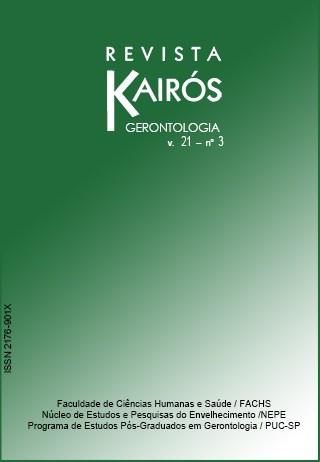Influence of plantar cutaneous stimuli on sensitivity and postural control in the elderly
DOI:
https://doi.org/10.23925/2176-901X.2018v21i3p281-292Keywords:
Aged, Postural balance, Aging.Abstract
Decreased plantar skin sensitivity may result in reduced postural control in the elderly, making them more susceptible to falls. The objective of this study was to verify the influence of a plantar cutaneous stimulation program on the sensitivity threshold and postural control in elderly individuals. This was a prospective, randomized, single-blind clinical study involving 36 elderly individuals older than 60 years of age of both sexes, submitted to the Timed Up and Go (TUG) test to measure functional mobility, unipedal stance test to evaluate static balance, and evaluation of plantar sensitivity by sensation threshold test with nylon monofilaments. Elderly were divided into two groups. The control group did not undergo any intervention and was instructed not to change their lifestyle. The experimental group was oriented to perform home interventions for 3 weeks. After this period, all participants were reassessed. Results revealed that both groups showed higher plantar skin sensibility after 3 weeks, but no changes were observed in postural control. Both groups showed improvement in plantar cutaneous sensitivity, and there was no difference between them.


